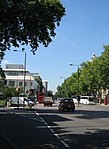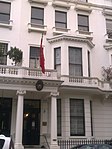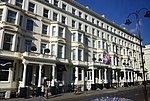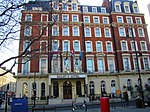St Stephen's, Gloucester Road
1867 establishments in the United Kingdom19th-century Church of England church buildingsAnglo-Catholic church buildings in the Royal Borough of Kensington and ChelseaAnglo-Catholic churches in England receiving AEOChurch of England church buildings in the Royal Borough of Kensington and Chelsea ... and 2 more
Churches completed in 1867Incomplete lists from April 2022

St Stephen's Church, Gloucester Road, is a Grade II* listed Anglican church located on the corner of Gloucester Road and Southwell Gardens in South Kensington, London, England.
Excerpt from the Wikipedia article St Stephen's, Gloucester Road (License: CC BY-SA 3.0, Authors, Images).St Stephen's, Gloucester Road
Gloucester Road, London South Kensington (Royal Borough of Kensington and Chelsea)
Geographical coordinates (GPS) Address Website External links Nearby Places Show on map
Geographical coordinates (GPS)
| Latitude | Longitude |
|---|---|
| N 51.4957 ° | E -0.1836 ° |
Address
Parish Church of St. Stephen
Gloucester Road
SW7 4PH London, South Kensington (Royal Borough of Kensington and Chelsea)
England, United Kingdom
Open on Google Maps










